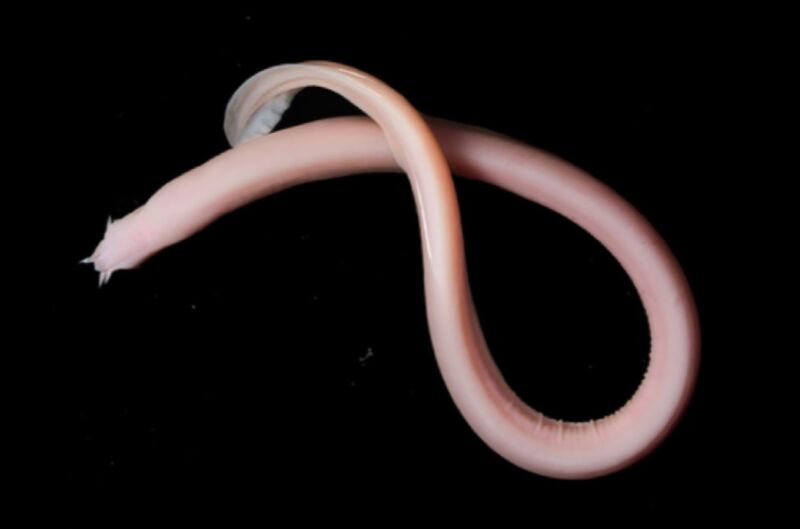
Enlarge / A recently discovered species: the Galapagos Ghost Hagfish (Myxine phantasma). (credit: Tim Winegard)
Meet the humble hagfish, an ugly, gray, eel-like creature affectionately known as a “snot snake,” because of its unique defense mechanism. The hagfish can unleash a full liter of sticky slime from pores located all over its body in less than one second. That’s sufficient to, say, clog the gills of a predatory shark, suffocating the would-be predator. A new paper published in the journal Current Biology reports that the slime produced by larger hagfish contains much larger cells than slime produced by smaller hagfish—an unusual example of cell size scaling with body size in nature.
As we’ve reported previously, scientists have been studying hagfish slime for years because it’s such an unusual material. It’s not like mucus, which dries out and hardens over time. Hagfish slime stays slimy, giving it the consistency of half-solidified gelatin. That’s due to long, thread-like fibers in the slime in addition to the proteins and sugars that make up mucin, the other major component. Those fibers coil up into “skeins” that resemble balls of yarn. When the hagfish lets loose with a shot of slime, the skeins uncoil and combine with the salt water, blowing up more than 10,000 times its original size.
From a materials standpoint, hagfish slime is fascinating stuff. Back in 2016 a group of Swiss researchers studied the unusual fluid properties of hagfish slime, specifically focusing on how those properties provided two distinct advantages: helping the animal defend itself from predators and tying itself in knots to escape from its own slime. They found that different types of fluid flow affect the overall viscosity of the slime. A flowing liquid is essentially a series of layers sliding past one another. The faster one layer slides over another, the more resistance there is, and the slower the sliding, the less resistance there is. As I wrote for Gizmodo at the time:
